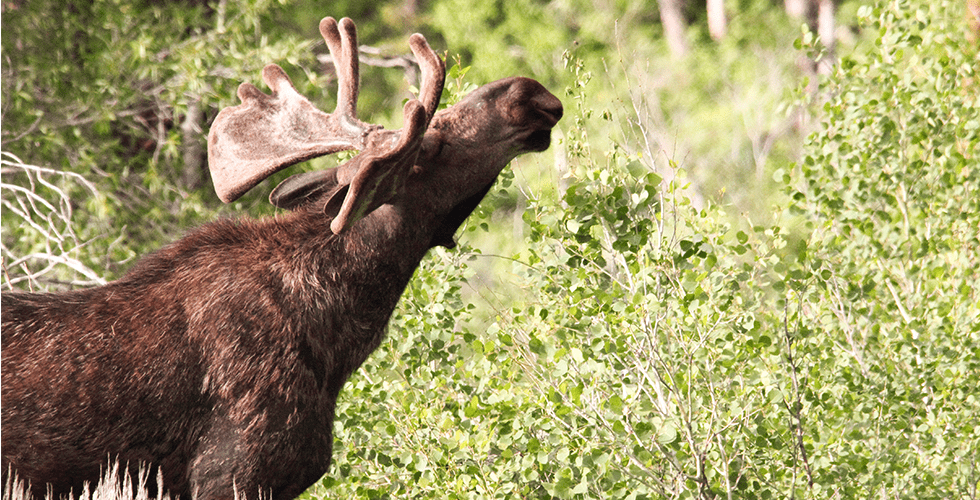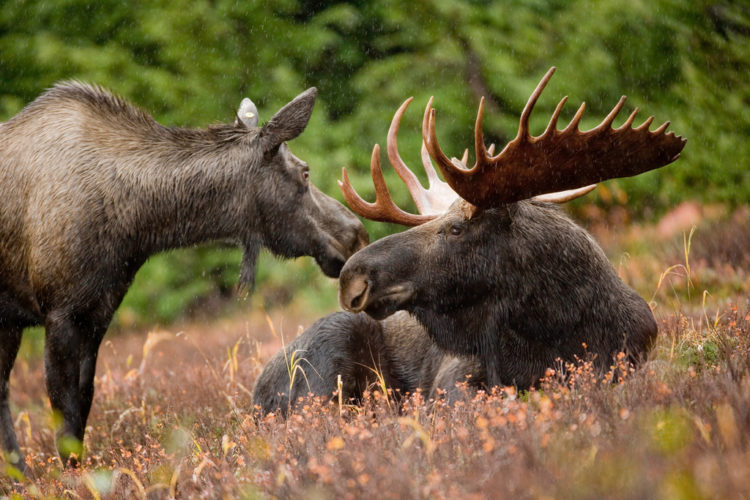We have much more to do and your continued support is needed now more than ever.
The Zero-Carbon Grid: Save the Moose!

This agreement demonstrates the growing international consensus to address climate change – a primary threat to wildlife – and the rapid transition occurring from dirty fossil fuels to cleaner, renewable sources of energy.
The joint agreement also signals the increased importance for the Unites States to follow through on commitments to transition to clean power, invest in renewables, and slow the development of carbon intensive fossil fuels. These actions are necessary in order for the United States to meet its target goals, as well as the goals laid out by 195 nations in the 2015 Paris Agreement, which aims to keep average global temperatures from rising above 2°C (with an aspirational goal of 1.5°C).
Need for Clean Power Plan and Strong Methane Rules
A critical component of the United States’ effort to develop wildlife-friendly renewable energy and meet international goals is the Clean Power Plan. This plan details the first-ever federal rules limiting carbon emissions from the power (electric) sector, which, until this year, was the largest emitting sector in the U.S. economy.
Coal fired power plants and natural gas fired plants are responsible for much of the carbon emissions in the United States. Transitioning from these harmful energy sources to clean, renewable energy from the wind and sun must happen on a large and rapid scale across the country to avoid the worst impacts of climate change.
The Clean Power Plan is a powerful tool in this process, promising a 32% reduction in emissions from the power sector by 2030 by relying largely on increased use of renewable energy. Right now, the Clean Power Plan is delayed by court actions, but it is critical that states continue to move forward with meaningful plans for reducing emissions.
Also, this agreement underscores the importance of moving forward with strong rules to regulated methane pollution and waste from oil and gas operations. While the Administration took a good first step in regulating methane pollution – the second leading greenhouse gas and over 80 times as powerful as CO2 – by finalizing rules reducing pollution from existing sources, it is critical that the Environmental Protection Agency take the next step of limiting methane pollution from existing oil and gas sources as well. Likewise, the Bureau of Land Management must move forward with plans to limit methane waste from all sources on federal lands. Without these initiatives, the U.S. will not be able to meet the commitments it made today.
Helping Moose in the Northeast
Quickly addressing the causes of climate change will help keep the iconic moose in the mountains, swamps, and forests of northern states. Moose populations in the northeast are currently being decimated by expanding tick populations. The parasites have benefited from shorter winters- a lack of snow has allowed many more ticks to survive.
Studies in 2015 showed that 75% of the moose calves tagged by scientists in New Hampshire had died from ticks. In Maine, 60% had died. This moose population decline can be directly linked to climate change, and this loss highlights the need to combat carbon emissions.

This North American agreement gives further hope for the moose. In order to fulfill its promise, we need to not only ensure the Clean Power Plan moves forward, but that we also greatly expand responsible sources of renewable energy like the vast and burgeoning offshore wind resource off the Atlantic coast. Additionally, we need to make sure that fossil fuel development, like coal leasing on federal lands, better accounts for carbon output.
Take ActionHelp wildlife now by supporting the Clean Power Plan





















